Google Bard’s latest update gives the conversational AI chatbot the ability to help users better understand YouTube video content.
While the enhancement promises to be useful in many settings, I decided to put Google Bard’s “understanding” capabilities to the test.
Google Expands Capabilities Of Bard’s YouTube Extension
According to the latest updates page for Bard, Bard should allow users to interact with YouTube video content, deepening user engagement with Google’s video platform.
Google’s expansion of the YouTube Extension within Bard is not just a technical advancement. It aligns with the tech giant constantly integrating new AI and social experiences into its products.
The enhanced Bard AI could analyze video content for marketing insights, audience engagement patterns, and content optimization strategies.
However, the real test of this new feature lies in its effectiveness and accuracy.
Testing Google Bard’s Understanding Of YouTube Videos
While the promise of a more immersive AI experience is enticing, questions about the depth of Bard’s understanding of video content remain.
Can it accurately interpret and provide relevant information based on video content?
How does it handle complex queries that require contextual understanding?
Trending Topic Videos
I decided to start with the hot topic in tech: OpenAI’s first and fourth CEO, Sam Altman.
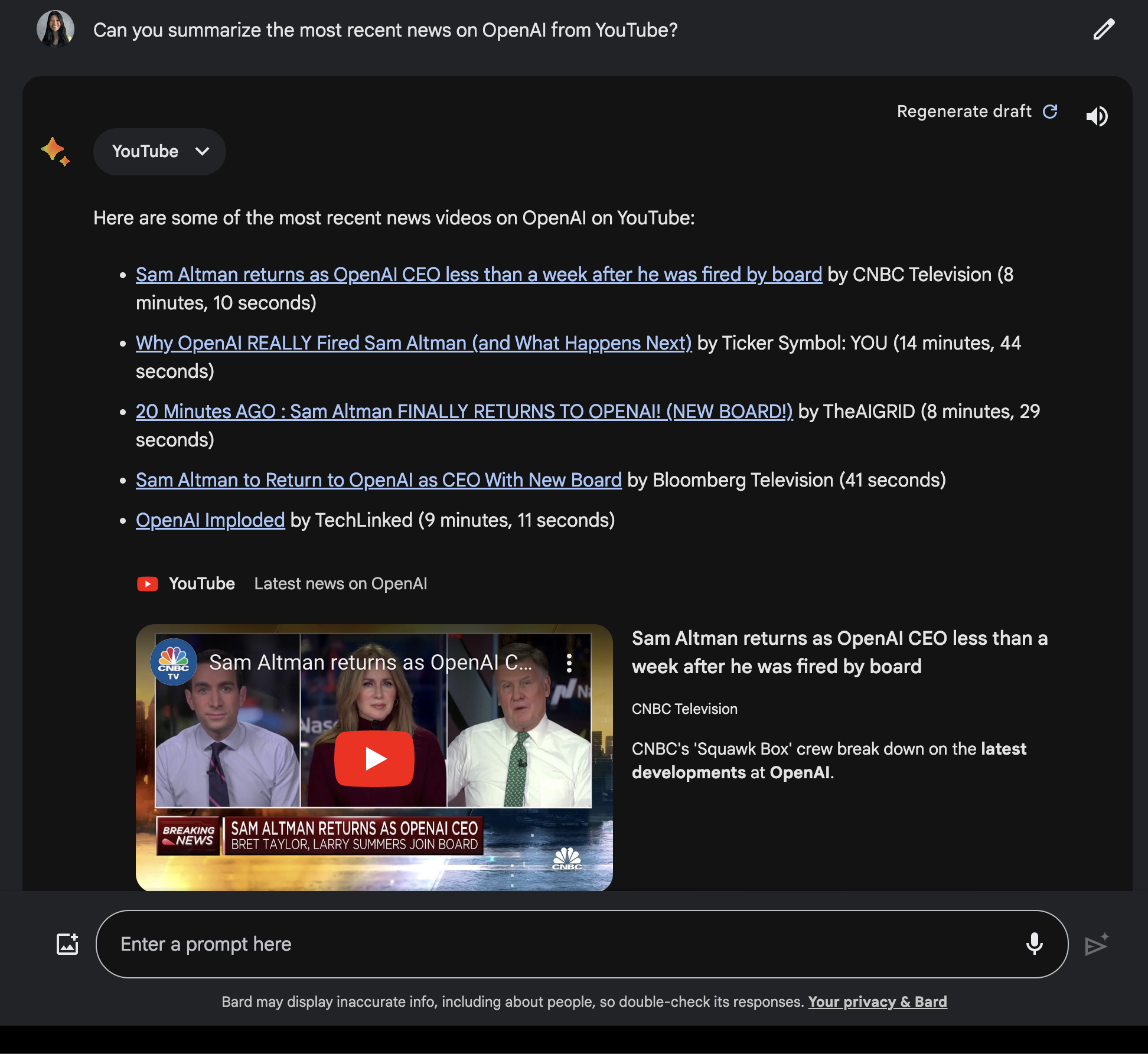 Screenshot from Google Bard, November 2023
Screenshot from Google Bard, November 2023Since the CNBC video is featured, I asked Google Bard to tell me more about it. This is where things go wrong.
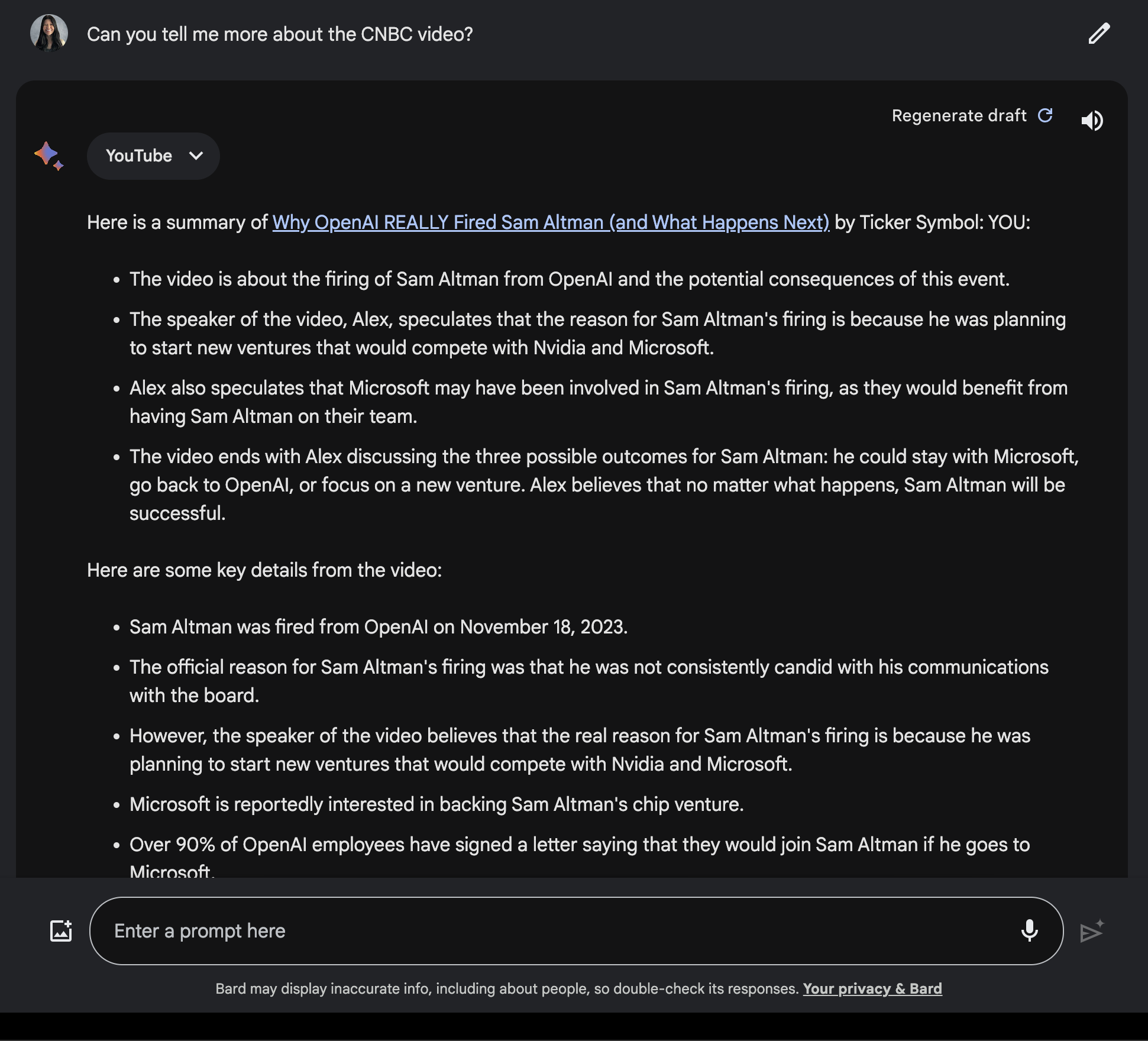 Screenshot from Google Bard, November 2023
Screenshot from Google Bard, November 2023The second time is the charm. Interestingly, it adds “the potential dangers of AI” to this topic.
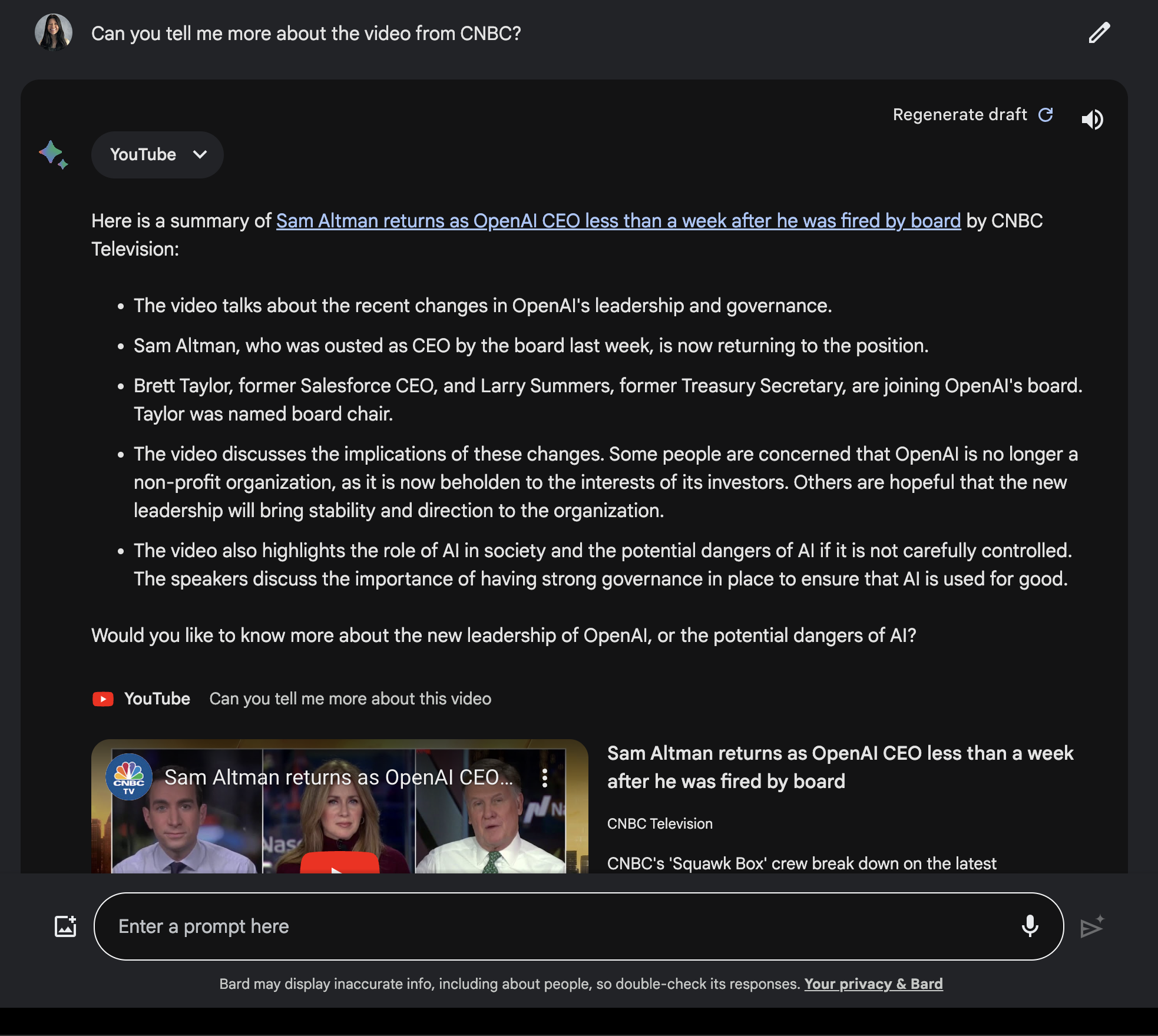 Screenshot from Google Bard, November 2023
Screenshot from Google Bard, November 2023Finding The Most Recent Video
So I know it can find videos posted within the last five hours. Let’s see what it can tell me about the latest Google Search Central video.
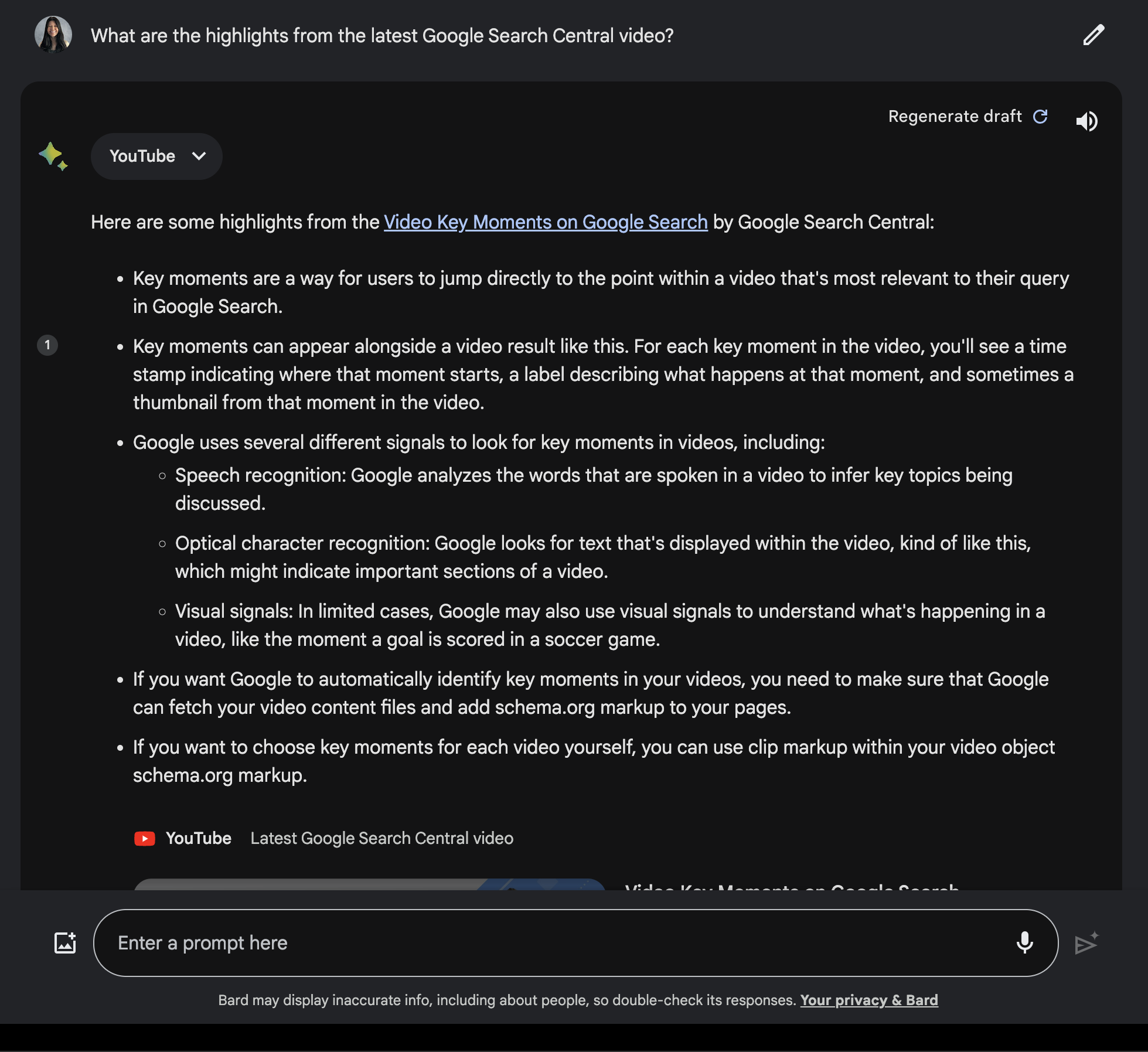 Screenshot from Google Bard, November 2023
Screenshot from Google Bard, November 2023It’s a great explanation, but…
 Screenshot from YouTube, November 2023
Screenshot from YouTube, November 2023Google Bard knew this.
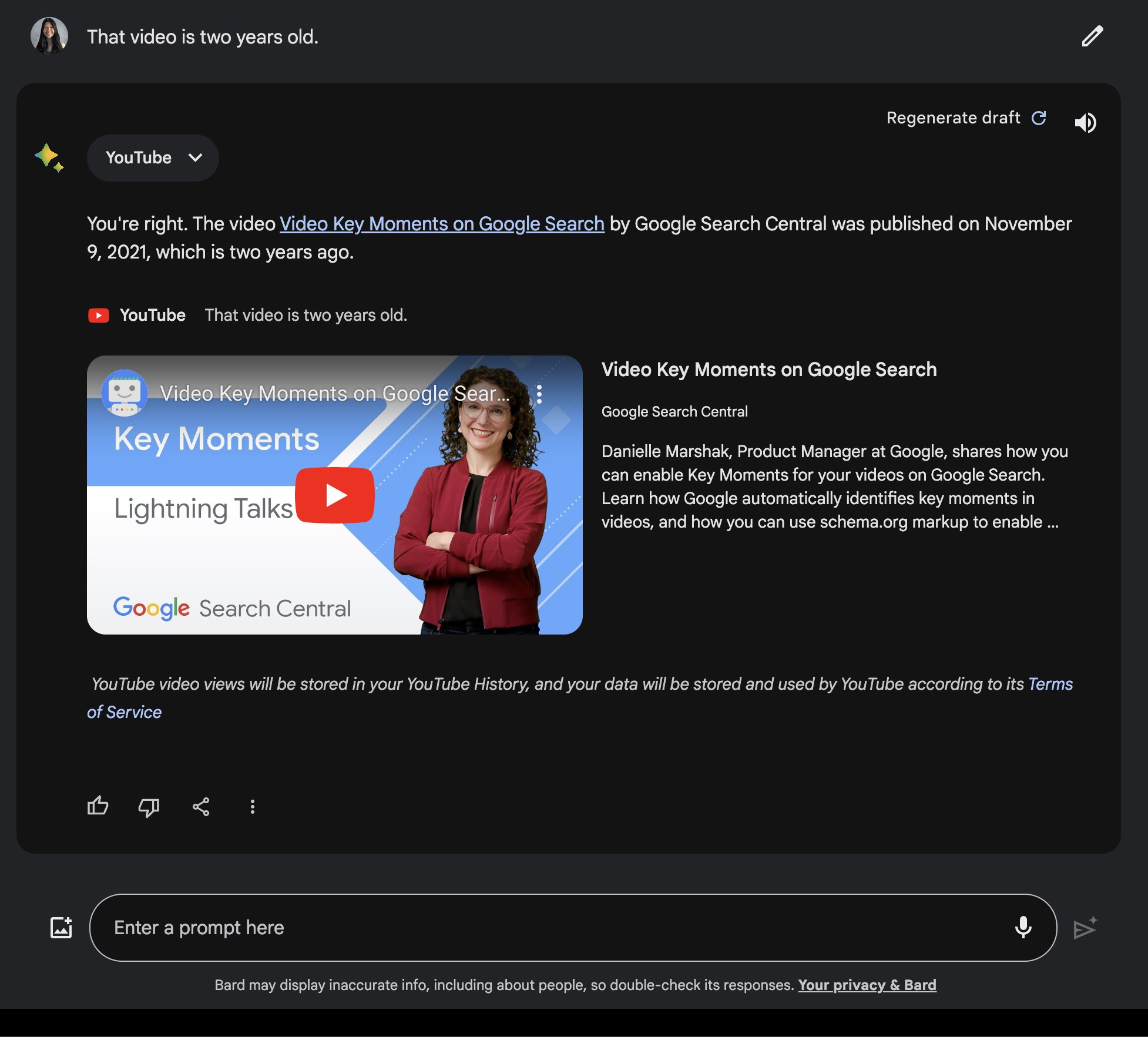 Screenshot from Google Bard, November 2023
Screenshot from Google Bard, November 2023Meanwhile, on YouTube…
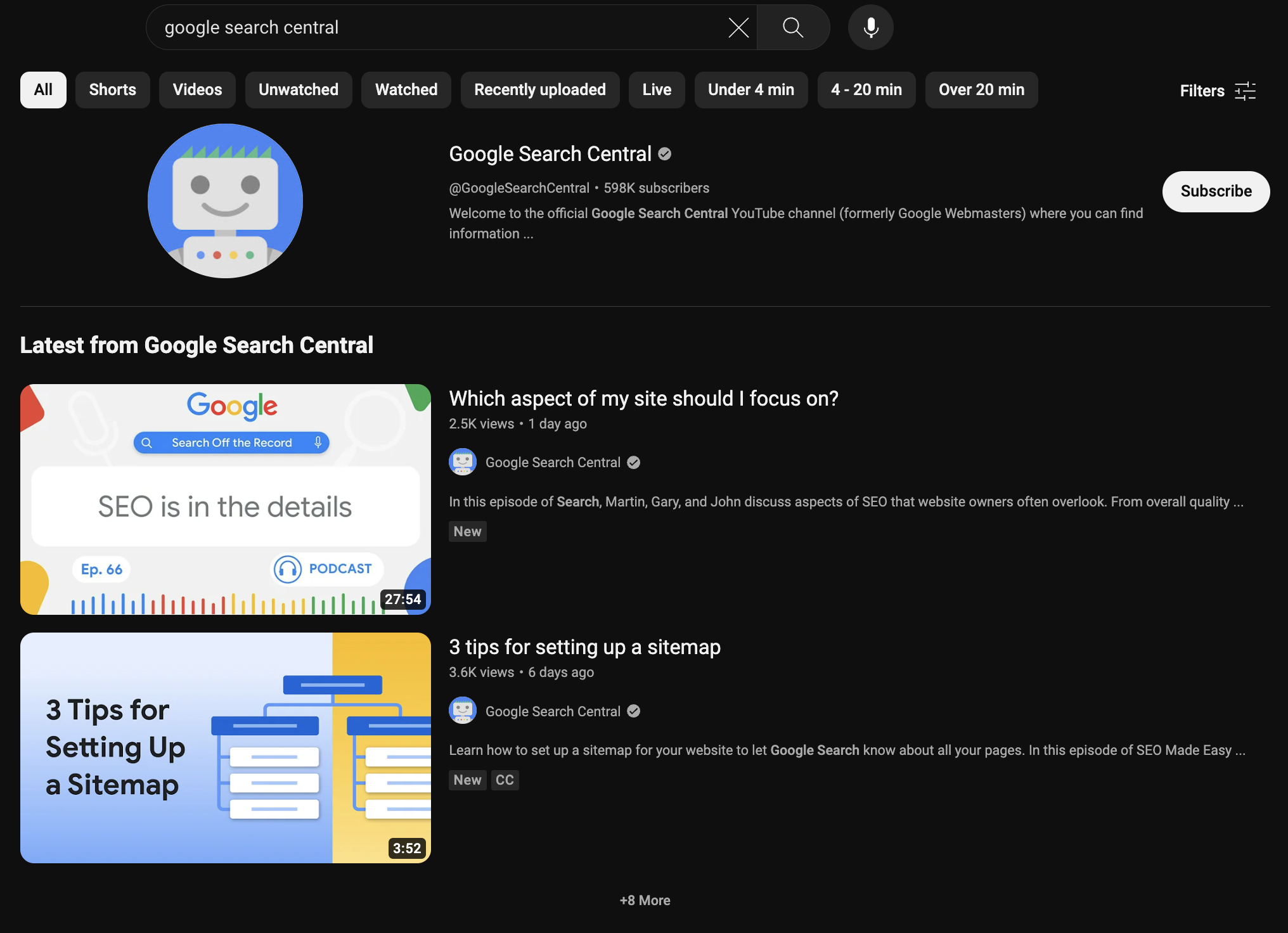 Screenshot from YouTube, November 2023
Screenshot from YouTube, November 2023Content From Specific YouTube Channels
Next, I tried to specify a YouTube channel.
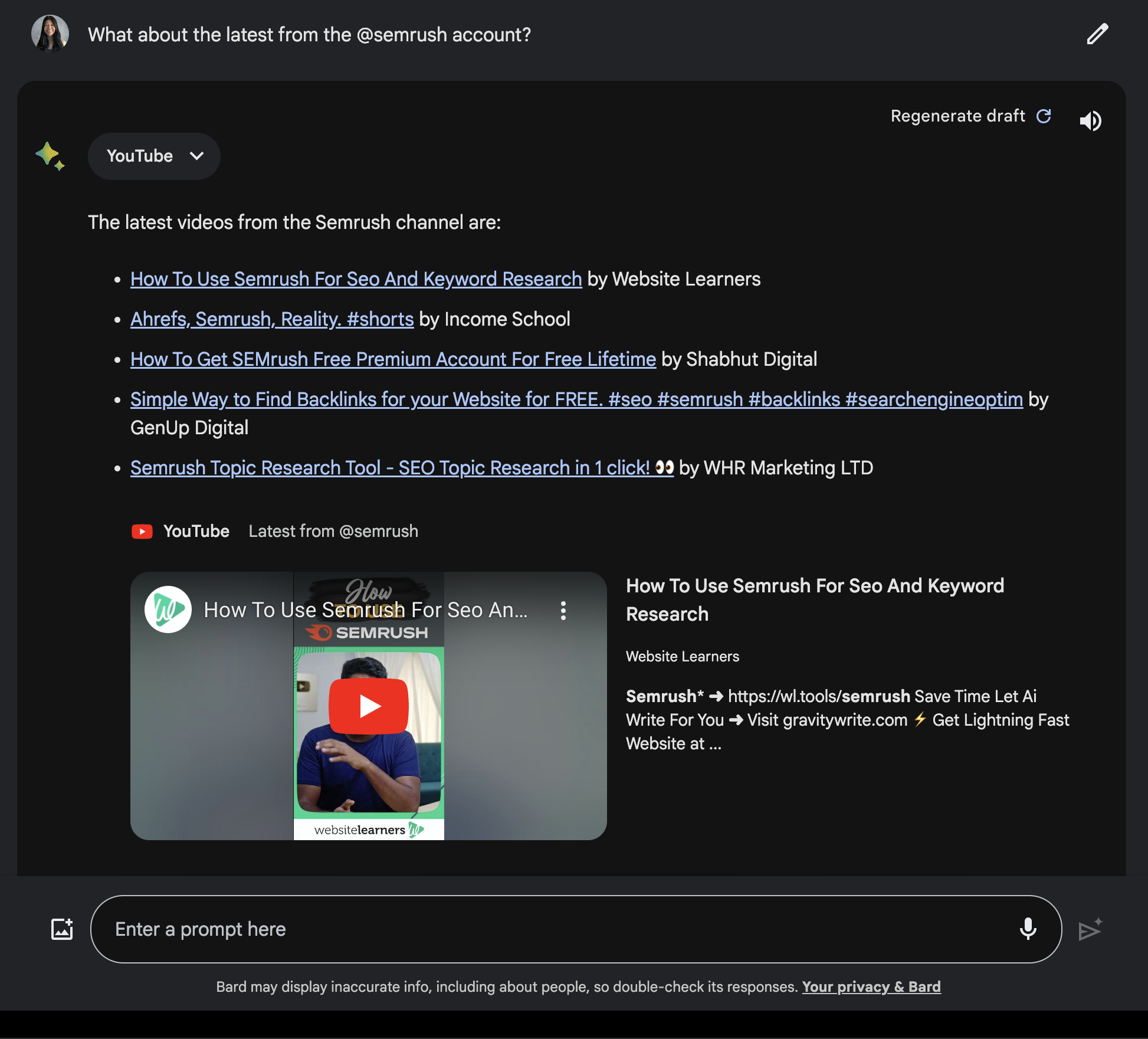 Screenshot from Google Bard, November 2023
Screenshot from Google Bard, November 2023Once I specify the video, I get the answer.
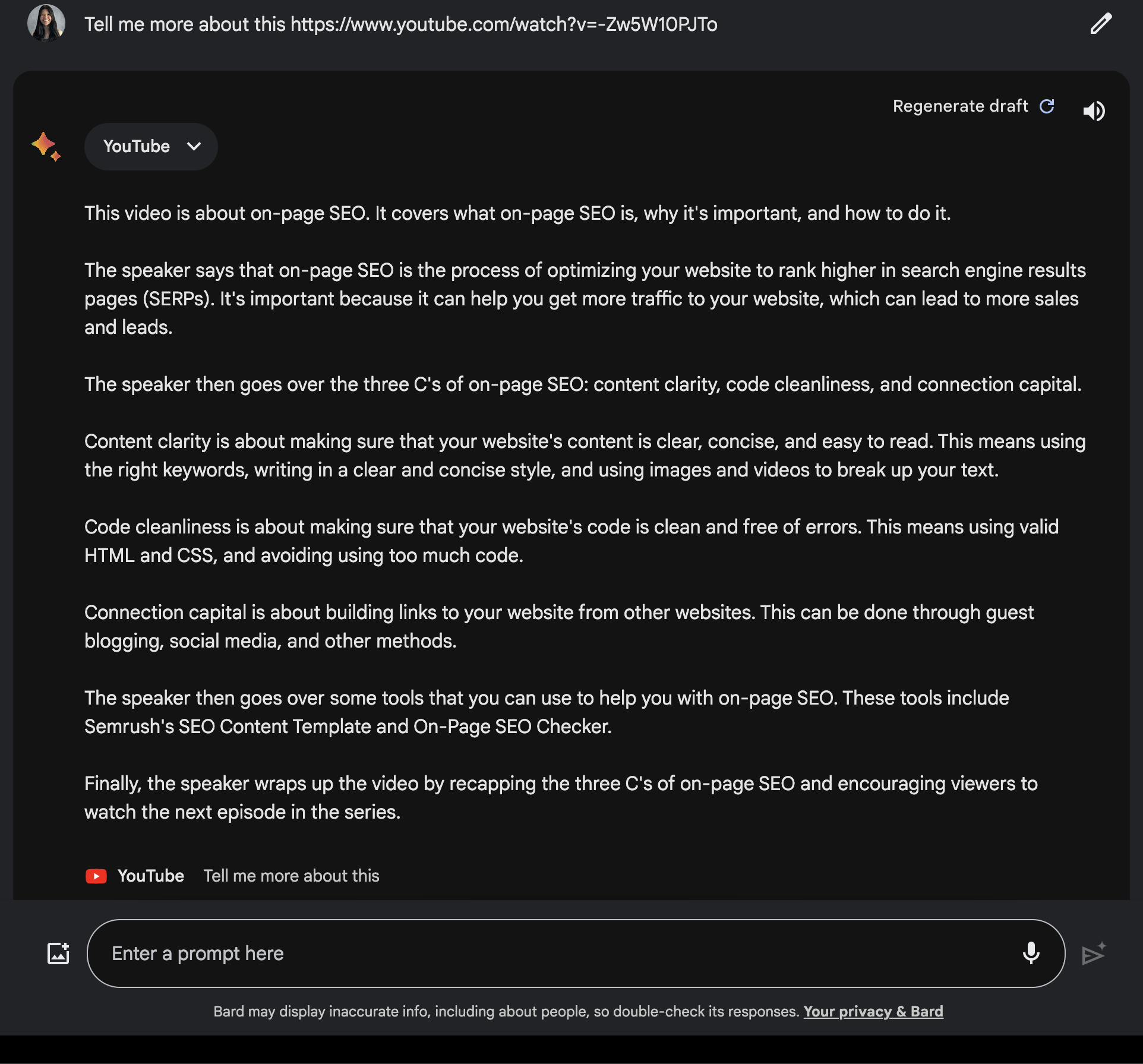 Screenshot from Google Bard, November 2023
Screenshot from Google Bard, November 2023Comparing SEO Advice With Google Guidelines
An extremely useful feature for people learning about SEO is that they can run the information by Google documentation to ensure it’s good advice.
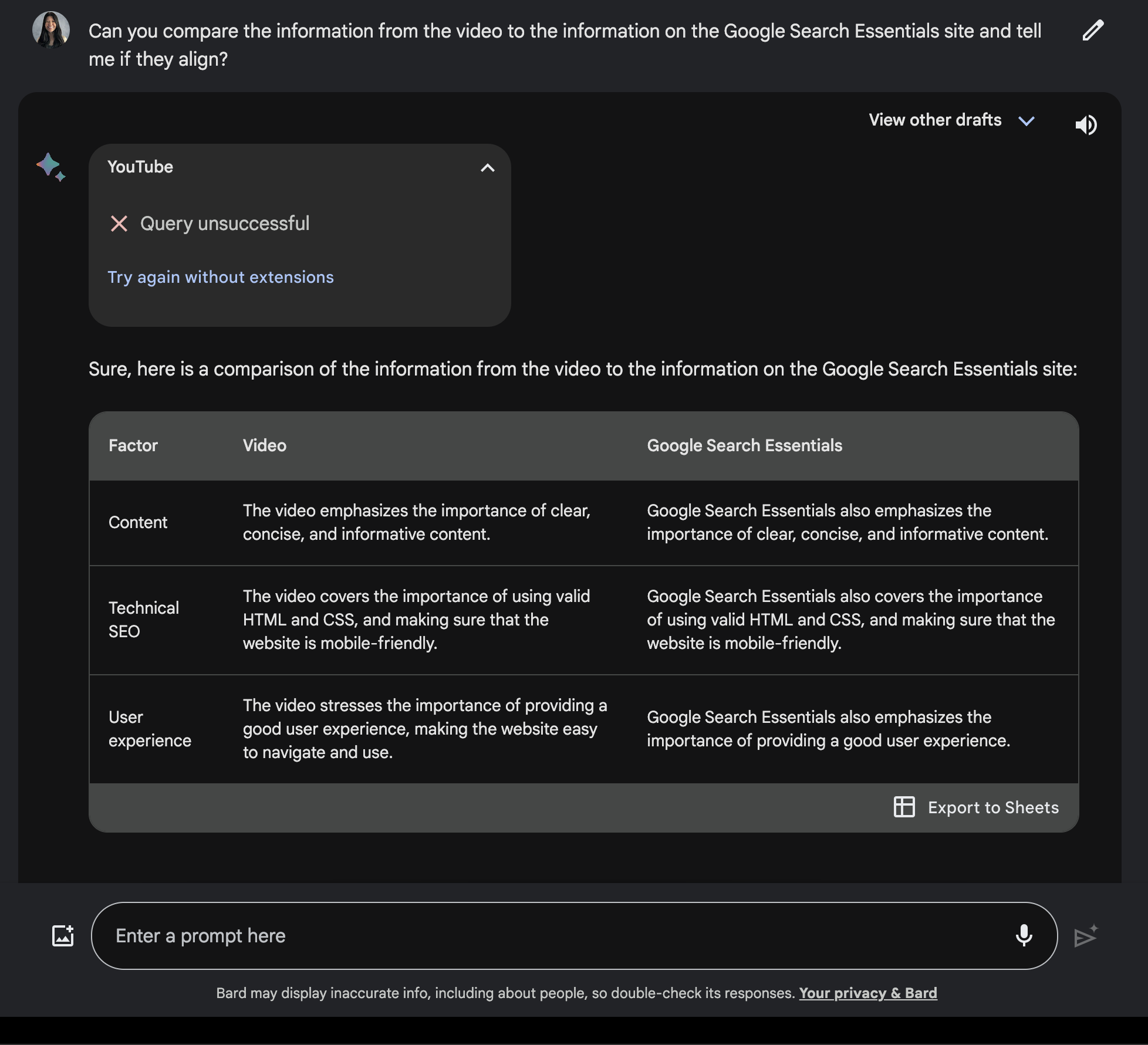 Screenshot from Google Bard, November 2023
Screenshot from Google Bard, November 2023Extracting Quotes From A Long Transcript
One task that I often rely on AI tools to accomplish is synthesizing the information from keynotes, interviews, and other long-form videos.
In this case, I asked Bard to select the best quotes from the following video.
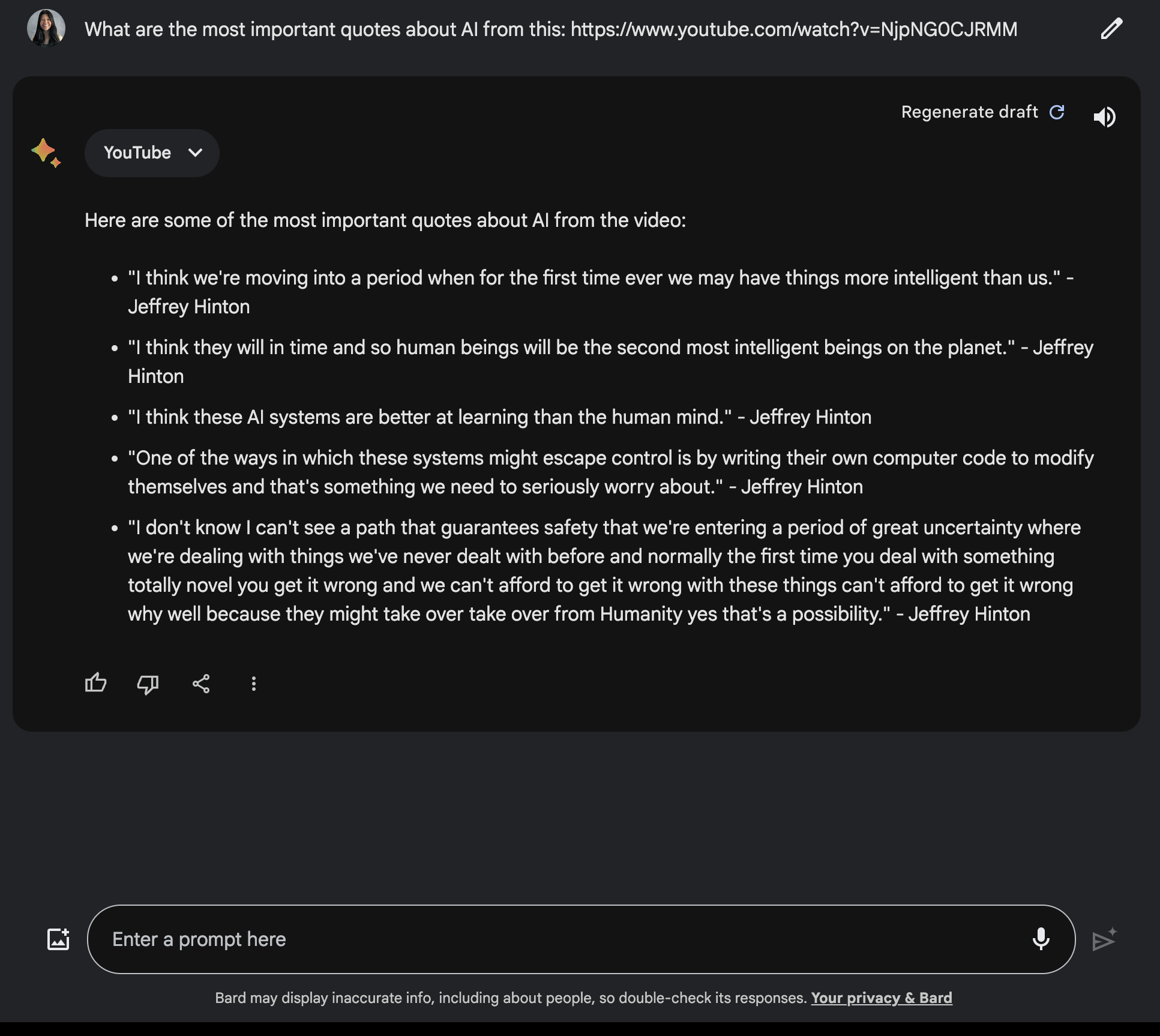 Screenshot from Google Bard, November 2023
Screenshot from Google Bard, November 2023However, in this instance, Bard didn’t summarize the main video from the URL I shared.
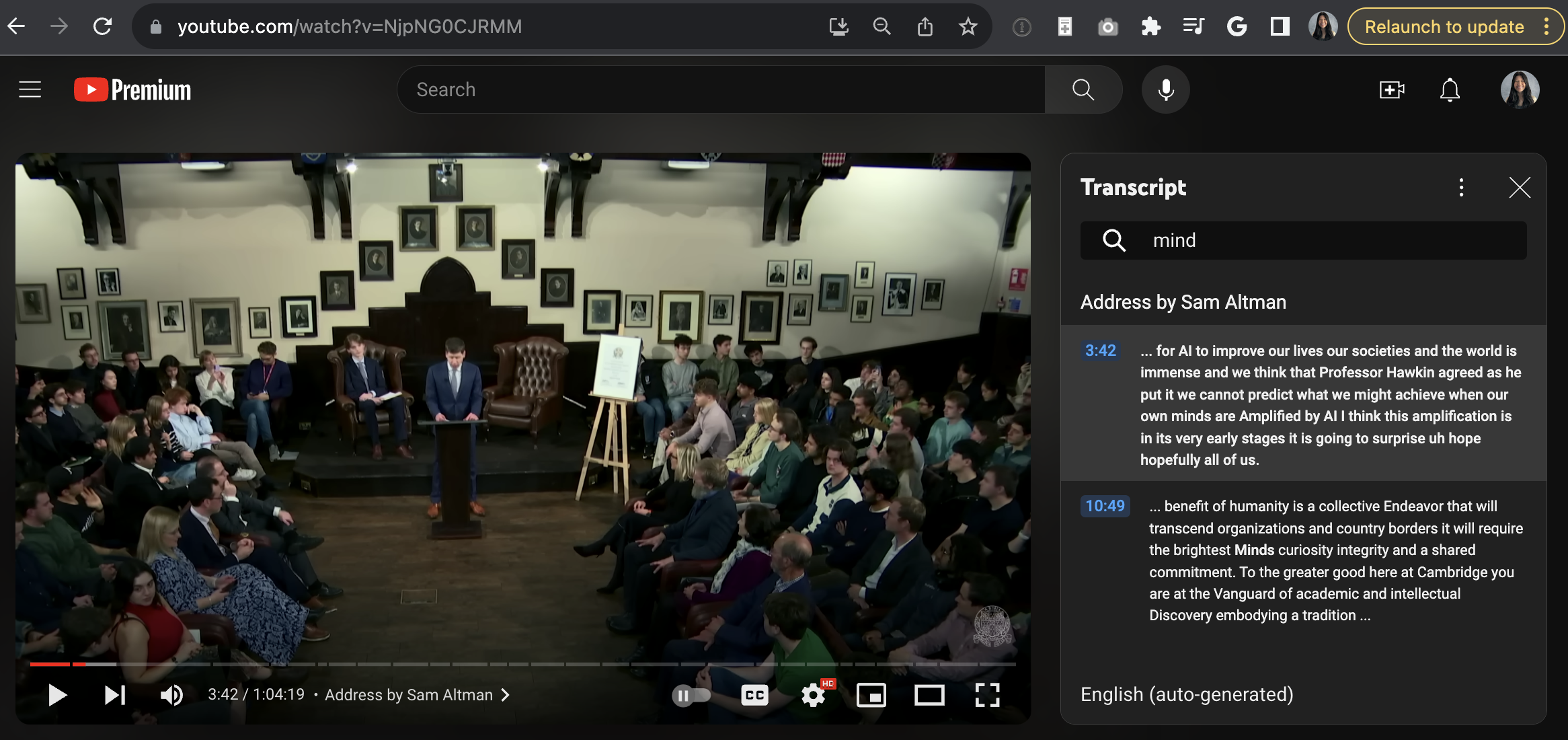 Screenshot from YouTube, November 2023
Screenshot from YouTube, November 2023Bard instead pulled quotes from the thirteenth related video in the sidebar.
 Screenshot from YouTube, November 2023
Screenshot from YouTube, November 2023So it pulled quotes from the wrong video and misspelled the speaker’s name.
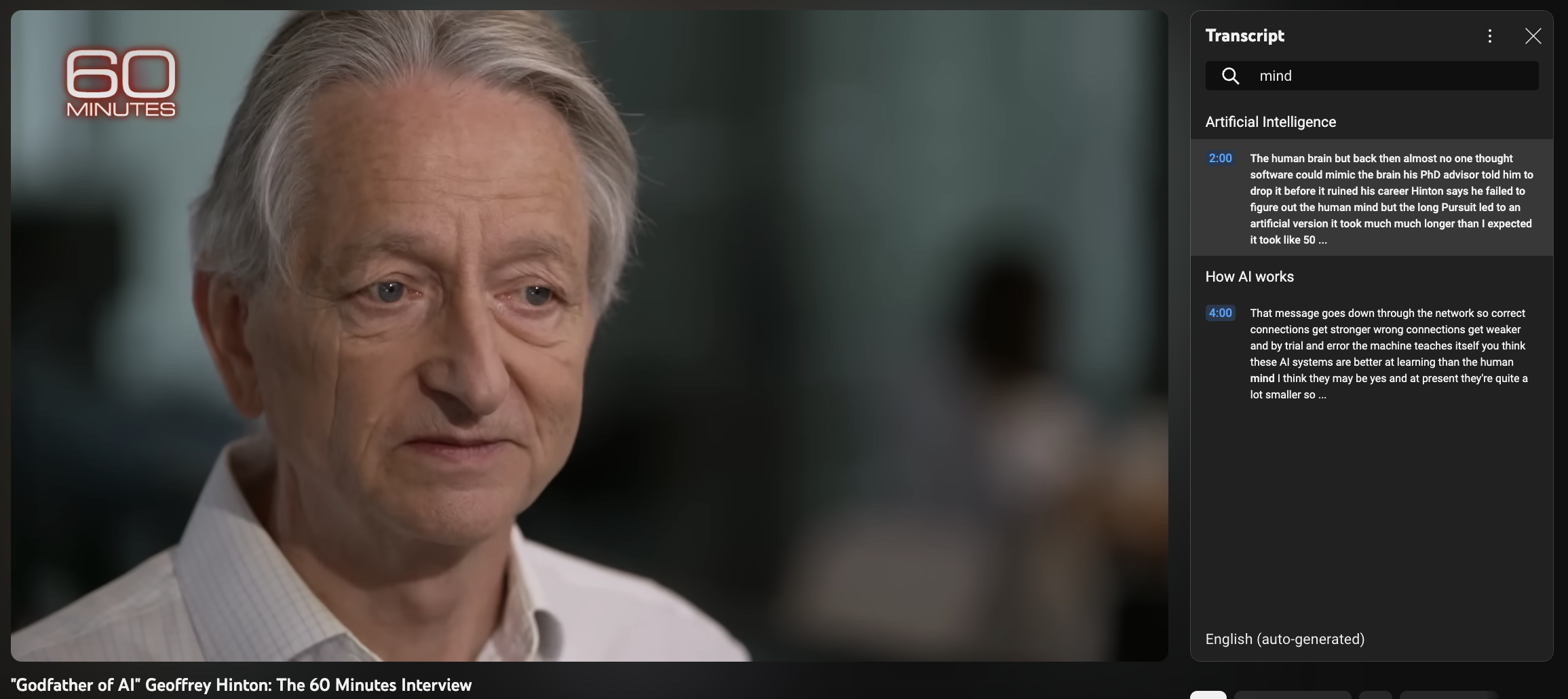 Screenshot from YouTube, November 2023
Screenshot from YouTube, November 2023Bard did, however, acknowledge the inaccuracies when asked.
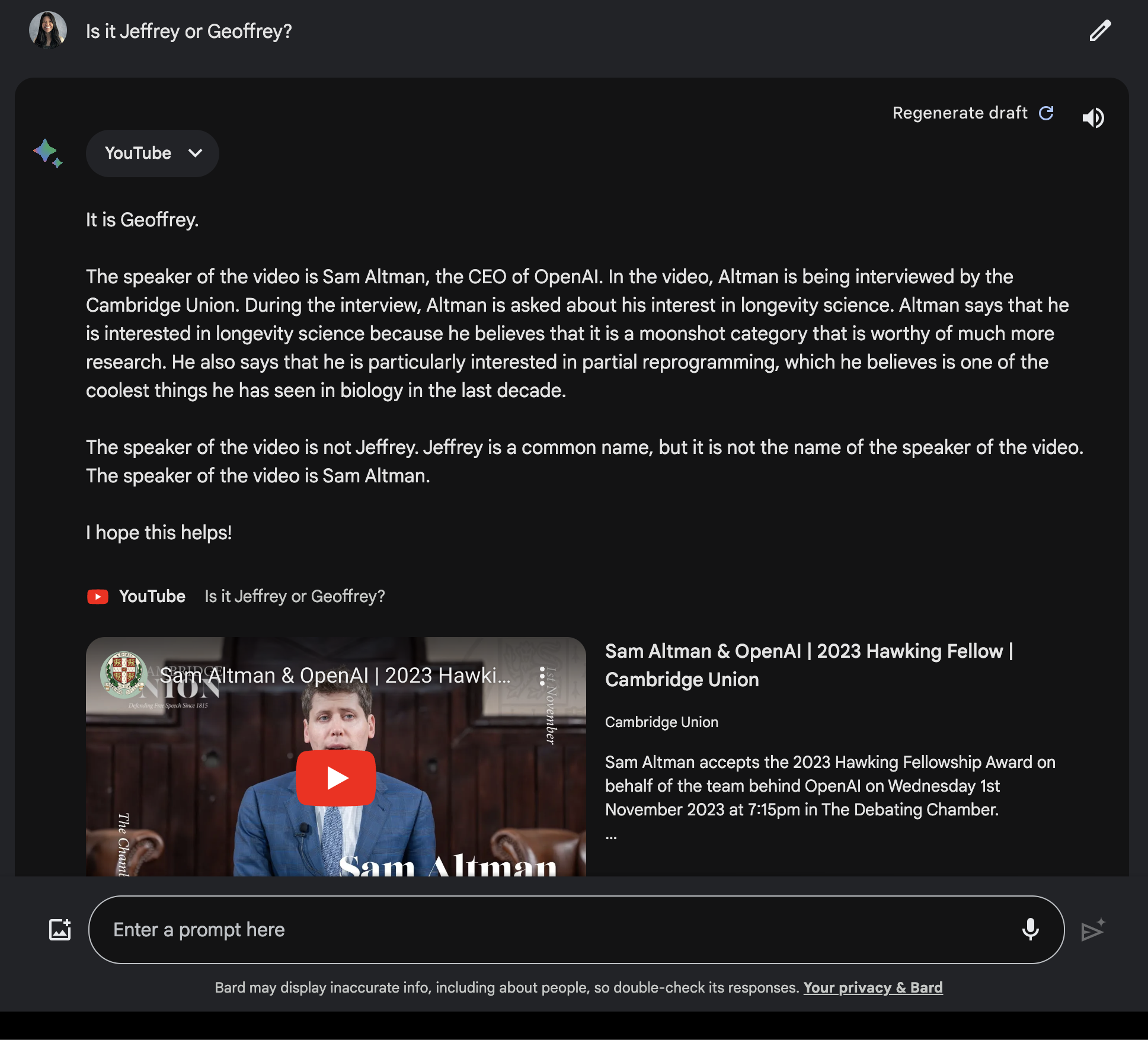 Screenshot from Google Bard, November 2023
Screenshot from Google Bard, November 2023As Google continues experimenting with Bard, its capabilities in understanding YouTube videos will become more accurate. For now, it is hit or miss.
AI Advances Continue
In conclusion, Google’s latest update to Bard paves the way for more sophisticated AI-video interactions.
The marketing and tech industry implications are vast, with potential shifts in content analysis and engagement strategies. The ultimate measure of success for this new feature will be its real-world performance and accuracy, which should improve in the future.
Comments or questions? Message me @kristileilani on X!
Featured image: Domenico Fornas/Shutterstock
